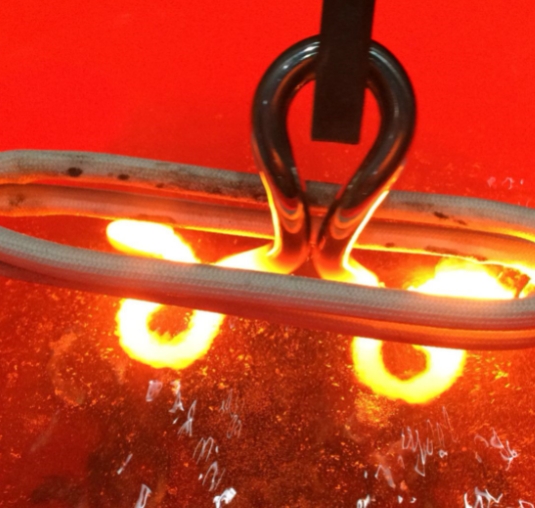- 14
- Apr
What are the commonly used quenching methods for high frequency quenching equipment
What are the commonly used quenching methods for ከፍተኛ ድግግሞሽ ማጥፊያ መሣሪያዎች
The commonly used quenching methods for high-frequency quenching equipment are:
1. Single medium quenching
The advantage of single-medium quenching is that it is easy to operate, but it is only suitable for small-sized and simple-shaped workpieces, and is prone to large deformation and cracking for larger-sized workpieces.
2. Double medium quenching
Double-medium quenching is to heat the workpiece to austenitize and then immerse it in a medium with strong cooling ability. When the transformation of martensite structure is about to occur, it is immediately transferred to a medium with weak cooling ability to continue cooling. Generally, water is used as the fast-cooling quenching medium, and oil is used as the slow-cooling quenching medium. Sometimes water quenching and air cooling can be used. Double medium quenching can better prevent workpiece deformation and cracking. Larger carbon steel workpieces are suitable for quenching in this way.
3, graded quenching
This quenching method greatly reduces the quenching capacity due to the uniform temperature inside and outside the workpiece and completes the martensitic transformation under slow cooling conditions, thus effectively reducing or preventing the deformation and cracking of the workpiece, and also overcomes the difficulty of controlling the water and oil in the dual-medium quenching. Shortcomings. However, due to the high temperature of the cooling medium in this quenching method, the cooling rate of the workpiece in the alkali bath or salt bath is slow, so the waiting time is limited, and it is difficult for the large-section parts to reach the critical quenching rate. small workpiece.
4. Isothermal quenching
Austempering can significantly reduce the deformation and cracking of workpieces, and is suitable for processing complex, high-precision and important mechanical parts, such as molds, tools, and gears. Like graded quenching, isothermal quenching can only be applied to smaller workpieces. The medium and high frequency quenching machine tool equipment should decide which quenching method to use according to the workpiece you need to quench. Small tooling may also be achieved with single media quenching.
In addition to the above quenching methods in the quenching process of high-frequency quenching machine tools, many new quenching processes have been developed to improve the strength and toughness of steel in recent years, such as high-temperature quenching, rapid cyclic heating quenching, etc.

